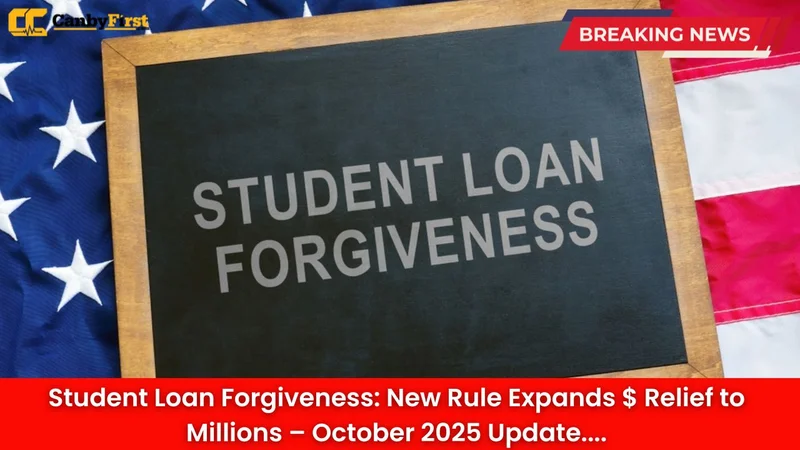I’ve spent my career marveling at systems—elegant code, self-landing rockets, neural networks that learn. We live in an age of seamless, resilient, beautiful design. And then you look at Washington D.C., and you see a machine grinding itself to dust. The government shutdown that began this week isn't just political theater; it's a catastrophic system failure. And for over a million student loan borrowers, the blue screen of death just appeared on their financial lives.
This isn't just about closed monuments and furloughed workers. This is about a digital promise, broken by an analog process. Right now, more than a million people are stuck in a backlog, a digital queue, waiting to enroll in income-driven repayment (IDR) plans. IDR—which is really just a humane way of saying your monthly payment should be based on what you actually earn, not some terrifying number plucked from a spreadsheet—is a lifeline. For many, it's the only path to solvency and, eventually, to the public student loan forgiveness they were promised.
But with the shutdown, that queue is no longer moving. It’s frozen in carbonite. The Education Department has sent most of its staff home. The people who process those applications, who could clear that backlog, are locked out of their offices. It's like building a state-of-the-art superhighway and then shutting down the on-ramps because a handful of people can't agree on the price of asphalt. The absurdity is staggering. Why, in 2025, does a political staring contest in the Capitol have the power to instantly paralyze the financial machinery governing millions of lives?
If the frozen application queue is a sign of systemic incompetence, what’s happening in the courts is a sign of something far more chilling. The American Federation of Teachers (AFT), representing educators who have dedicated their lives to public service, is in the middle of a Student Loan Forgiveness Class Action Lawsuit Halted By Trump Administration against the Department of Education. They allege that the government has been illegally blocking and delaying the very student loan forgiveness program it created. These are people who held up their end of the bargain for decades, and now they’re having to sue to get the government to hold up its.

And the administration’s response? The Justice Department, citing the shutdown, has filed a motion to hit the pause button on the entire case. Let that sink in. The government shuts down, creating a crisis for borrowers, and then uses that same crisis as a legal shield to avoid being held accountable for its previous failures. When I first read that, I honestly just sat back in my chair, speechless. This isn't just bureaucratic inertia; it feels deeply, profoundly cynical.
This delay isn’t just an inconvenience; it’s a ticking time bomb with a very specific fuse. On January 1, 2026, the tax code changes. Any loan forgiveness granted after that date could be considered taxable income. We're talking about people who might suddenly face a tax bill on more than $100,000 of forgiven debt—a debt they should have had wiped clean months, or even years, ago. Imagine running a 20-year marathon, crossing the finish line, and being told that because of a clerical error, you now owe a massive penalty. The clock is ticking, and the government just asked the referee to stop the game. Is this simply an unavoidable consequence of a shutdown, or is it a deliberate strategy to run out the clock on borrowers' rights?
This whole mess is a perfect, heartbreaking metaphor for our government's technological debt. The student loan system is like a massive, archaic piece of machinery from the 1970s—all gears, levers, and paper forms—trying to operate in the age of the algorithm. When one part breaks, the entire factory floor goes silent. And scattered among the silent machines are the real people whose lives depend on it, holding paperwork that’s suddenly worthless, watching a deadline on the calendar get closer and closer. We’ve built a system so brittle, so dependent on manual oversight, that it can be completely derailed by partisan squabbling.
The most frustrating part of this is that the problem is so solvable. We have the technology to build a smart, automated, and resilient federal student loan forgiveness system. A system that could process applications instantly, verify public service records automatically, and grant forgiveness the moment a borrower becomes eligible—shutdown or no shutdown. The fact that we haven't built it isn't a failure of technology. It's a failure of imagination and political will. We can design systems to deliver groceries to our door in an hour, but we can't design one to deliver financial freedom to a teacher after a decade of service. What does that say about our priorities?
Let's be clear: this isn't a partisan problem. It's a design problem. The operating system of our federal government is obsolete. We are trying to run a 21st-century society on bureaucratic code written for a mid-20th-century world. The current shutdown and its devastating impact on student borrowers isn't an anomaly; it's a feature of a broken system. It's the inevitable crash that happens when you refuse to update the software for decades. We deserve better. We need to demand a fundamental reboot.